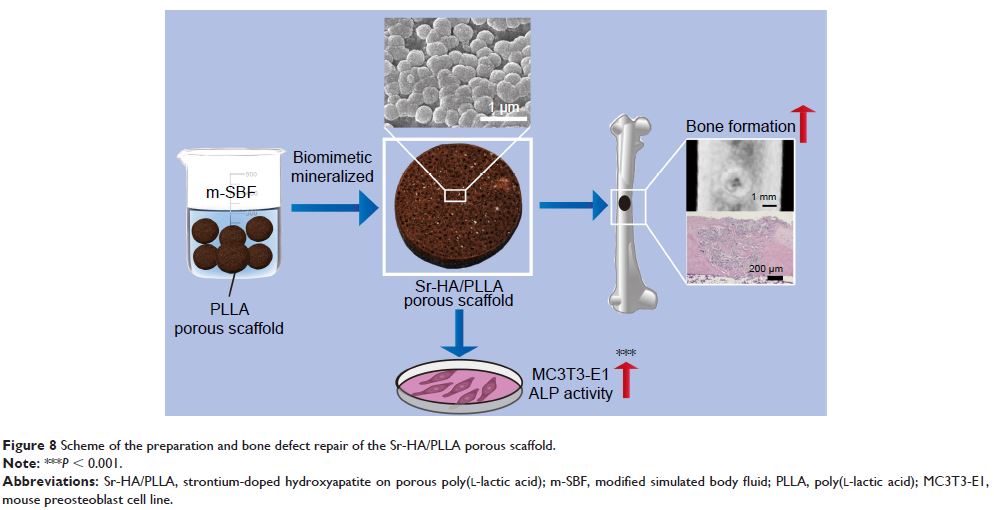108985
论文已发表
注册即可获取德孚的最新动态
IF 收录期刊
- 3.4 Breast Cancer (Dove Med Press)
- 3.2 Clin Epidemiol
- 2.6 Cancer Manag Res
- 2.9 Infect Drug Resist
- 3.7 Clin Interv Aging
- 5.1 Drug Des Dev Ther
- 3.1 Int J Chronic Obstr
- 6.6 Int J Nanomed
- 2.6 Int J Women's Health
- 2.9 Neuropsych Dis Treat
- 2.8 OncoTargets Ther
- 2.0 Patient Prefer Adher
- 2.2 Ther Clin Risk Manag
- 2.5 J Pain Res
- 3.0 Diabet Metab Synd Ob
- 3.2 Psychol Res Behav Ma
- 3.4 Nat Sci Sleep
- 1.8 Pharmgenomics Pers Med
- 2.0 Risk Manag Healthc Policy
- 4.1 J Inflamm Res
- 2.0 Int J Gen Med
- 3.4 J Hepatocell Carcinoma
- 3.0 J Asthma Allergy
- 2.2 Clin Cosmet Investig Dermatol
- 2.4 J Multidiscip Healthc

已发表论文
掺杂仿生矿化锶的羟基磷灰石用于多孔聚 L-乳酸支架以修复骨缺损
Authors Ge M, Ge K, Gao F, Yan W, Liu H, Xue L, Jin Y, Ma H, Zhang J
Received 19 October 2017
Accepted for publication 24 January 2018
Published 20 March 2018 Volume 2018:13 Pages 1707—1721
DOI https://doi.org/10.2147/IJN.S154605
Checked for plagiarism Yes
Review by Single-blind
Peer reviewers approved by Dr Govarthanan Muthusamy
Peer reviewer comments 3
Editor who approved publication: Dr Linlin Sun
Introduction: Poly(L-lactic acid)
(PLLA) has been approved for clinical use by the US Food and Drug
Administration (FDA); however, their stronger hydrophobicity and relatively
fast degradation rate restricted their widespread application. In consideration
of the composition of bone, the inorganic–organic composite has a great
application prospect in bone tissue engineering. Many inorganic–organic
composite scaffolds were prepared by directly mixing the active ingredient, but
this method is uncontrolled and will lead to lack of homogeneity in the polymer
matrix. Strontium (Sr) is an admirable addition to improve the bioactivity and
bone induction of hydroxyapatite (HA). To our knowledge, the application of
biomimetic mineralized strontium-doped hydroxyapatite on porous poly(L-lactic
acid) (Sr-HA/PLLA) scaffolds for bone defect repair has never been reported
till date. Biomimetic mineralized Sr-HA/PLLA porous scaffold was developed in
this study. The results indicated that the Sr-HA/PLLA porous scaffold could
improve the surface hydrophobicity, reduce the acidic environment of the
degradation, and enhance the osteoinductivity; moreover, the ability of protein
adsorption and the modulus of compression were increased. The results also
clearly showed the effectiveness of the Sr-HA/PLLA porous scaffold in promoting
cell adhesion, proliferation, and alkaline phosphatase (ALP) activity. The
micro computed tomography (micro-CT) results showed that more new bones were
formed by Sr-HA/PLLA porous scaffold treatment. The histological results
confirmed the osteoinductivity of the Sr-HA/PLLA porous scaffold. The results
suggested that the Sr-HA/PLLA porous scaffold has a good application prospect
in bone tissue engineering in the future.
Purpose: The purpose of this study was to promote the bone repair.
Materials and methods: Surgical operation of rabbits was carried out in this study.
Results: The results showed that formation of a large number of new bones by the Sr-HA/PLLA porous scaffold treatment is possible.
Conclusion: Biomimetic mineralized Sr-HA/PLLA porous scaffold could effectively promote the restoration of bone defects in vivo.
Keywords: Sr-HA, PLLA porous scaffold, biomimetic mineralization, bone repair
Purpose: The purpose of this study was to promote the bone repair.
Materials and methods: Surgical operation of rabbits was carried out in this study.
Results: The results showed that formation of a large number of new bones by the Sr-HA/PLLA porous scaffold treatment is possible.
Conclusion: Biomimetic mineralized Sr-HA/PLLA porous scaffold could effectively promote the restoration of bone defects in vivo.
Keywords: Sr-HA, PLLA porous scaffold, biomimetic mineralization, bone repair
